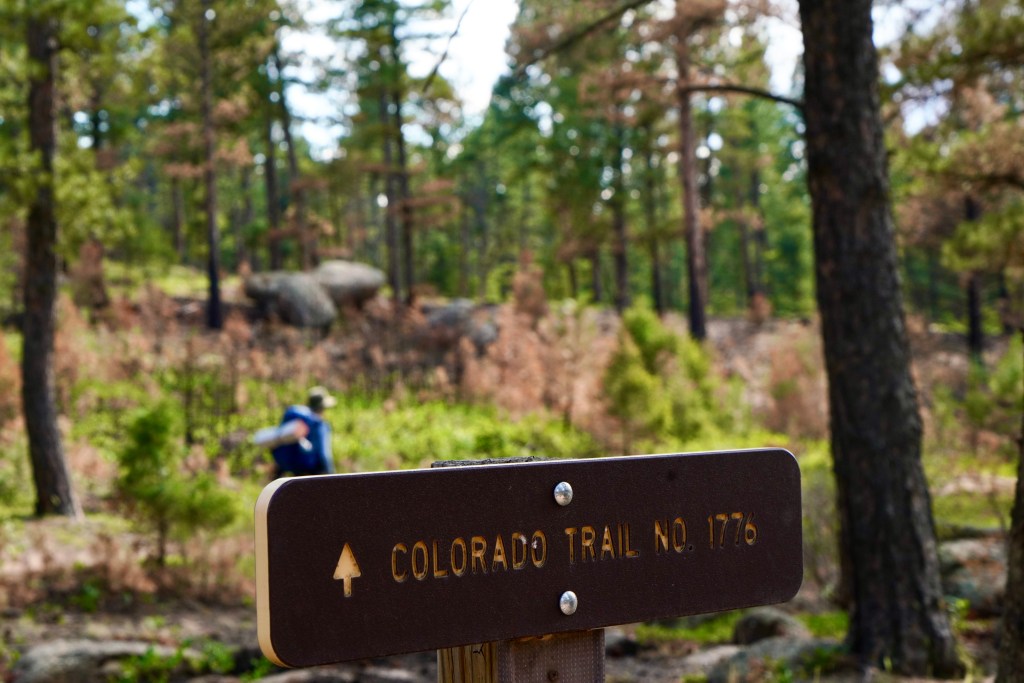The Colorado Trail, an iconic 567-mile high-elevation trail that crosses the Rockies, owes its existence largely to Gudy Gaskill, a charismatic, six-foot-tall woman who could make tough things seem easy.
Gaskill not only carried out the vision of a state trail, beginning slowly in the late 1970s but also gave birth to it. In 1972, she lobbied Congress, along with forester Bill Lucas, credited with the Colorado Trail idea, to change federal law so that volunteers could be allowed to build trails on public land.
Volunteerism was so potent an idea, that when, in 1984, writer Ed Quillen broke the story about Gaskill’s efforts to revive trail building that had foundered under the Colorado Mountain Trails Foundation, people were energized to join her. Soon, thanks to fundraising, she had 350 volunteers coming each summer to join trail crews she often led herself.
She made creating the Colorado Trail seem like a privilege: You camped out in beautiful backcountry, ate great food, and found stamina you never knew you possessed.
In 1985, caught up in the story, my father, Ed Marston, then publisher of High Country News, volunteered my sister, Wendy, 15, and me, 13, for a week of trail building. That’s how we learned how to swing those axe-like tools called Pulaskis on the Molas Pass to Durango section.
Gaskill herself led our crew, setting out early with orange ribbon to mark the trail. She was efficient and tireless, and in just a few hours, older, urban and young volunteers became trail builders with blisters to prove it.
It was exciting to work on a trail that unfurled along the rooftop of Colorado. Typical trails in those days led up mountains or over steep passes. The Colorado trail rejected peak-bagging and offered a moderate route of week-long, 70-mile sections, neither losing nor gaining elevation rapidly, though often charting a route above tree line.
I joined a trail crew to revisit my childhood adventure this summer, and from Aug. 7 to 11, Denver friend Jeff Miller and I worked to repair trail in Chaffee County’s Collegiate Peaks Wilderness.
In wilderness, if there’s a tree to fell, you use a handsaw. We needed to move big rocks, so two of us yoked ourselves together in nylon harnesses to do that. We divided labor this way: Men hauled big rocks, and women wielding rock hammers smashed the rocks into gravel.
Trail work has changed a lot in 39 years. Back then we built water bars to stop erosion from runoff. Logs anchored into slopes sluiced water off trails but required annual maintenance. Now, water moves off trail through “grade reversals.” The trail swoops below grade, efficiently shunting water off the path, then swoops back up to level grade. Drains are large versions of grade reversals.
My fellow volunteers were largely thru-hikers, skilled backcountry voyageurs who spend their holidays hiking the trail from Denver to Durango in one go. Mark Stephenson, 26, from Pittsburgh, Pennsylvania was one of the trail’s most ardent fans.
He arrived on the trail via Greyhound bus with $40 in his pocket, saying, “This is a place where money doesn’t matter.”
Thinking a reported two-and-a-half-mile hike to camp would be easy, my friend and I arrived at the trailhead loaded up with both front and back packs. I confess to having done the shopping. My friend was optimistic: “I can carry anything two and a half miles.”
But our camp had moved six miles away and 2,700 feet uphill. We made it, slowly, and once at camp, we quickly became free-store proprietors. But there was another problem: I’d left my tent poles at home. Crew leader Matt Smith, an engineer from Golden, easily came up with a fix: He used parachute cord to rig up the tent fly, then added a tarp to ward off the rain that soaked us every afternoon and night.
I don’t recall meeting thru-hikers in the mid-1980s, but today they seem to dominate hiking culture. I could only listen as the rest of the group talked about trails known by acronyms, including the famous AT — Appalachian Trail.
“You’re doing great work!” hikers told us as they passed by. Crew leader Smith offers this perspective today: “19,000 volunteer person-hours go into trail improvement every year.”
We owe thanks to those original trail stalwarts — forester Bill Lucas, journalist Merrill Hastings and of course, Gudy Gaskill. Their vision created of one of the state’s wonders.
Dave Marston is the publisher of Writers on the Range, writersontherange.org, an independent nonprofit dedicated to spurring lively conversation about the West. He lives in Durango, Colorado.
Sign up for Sound Off to get a weekly roundup of our columns, editorials and more.
To send a letter to the editor about this article, submit online or check out our guidelines for how to submit by email or mail.
